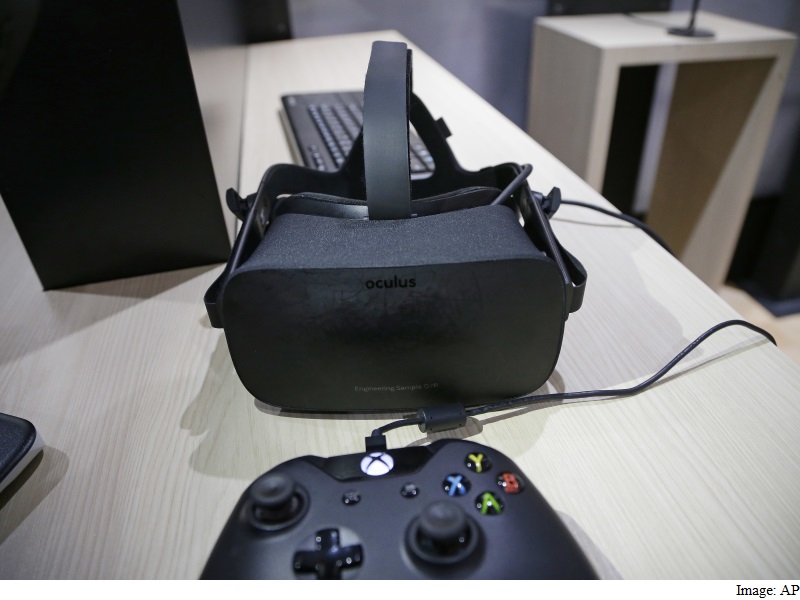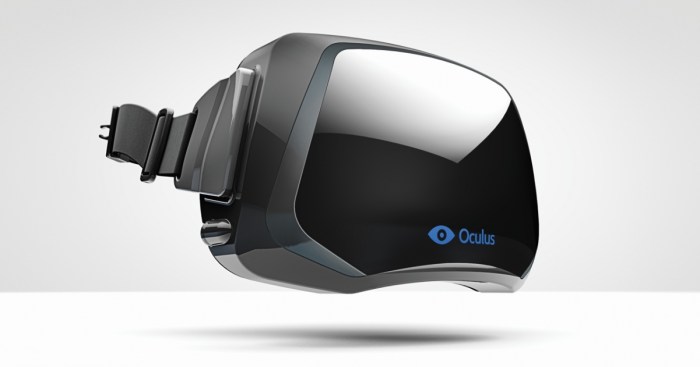Oculus founder delivers first rift headset himself, a moment that marked the beginning of a revolution in virtual reality. Palmer Luckey, the visionary behind Oculus VR, personally delivered the first Rift headset to a lucky recipient, igniting a wave of excitement and anticipation within the VR community. This act symbolized the culmination of years of dedication and hard work, paving the way for the widespread adoption of VR technology.
Luckey’s personal involvement in the early stages of the Oculus Rift’s development was instrumental in shaping the company’s trajectory. He tirelessly worked to overcome numerous technical hurdles, pushing the boundaries of what was possible in VR. The first Rift headset, a testament to his ingenuity and perseverance, represented a significant milestone in the evolution of virtual reality.
The First Rift Headset Delivery
Palmer Luckey, the visionary founder of Oculus VR, was deeply involved in every aspect of the Rift’s development, from its initial design to its eventual launch. He was particularly passionate about delivering the first Rift headset to a deserving recipient, marking a pivotal moment in the history of VR.
This delivery was not merely a technical event but a symbolic gesture, representing the culmination of years of tireless work and the beginning of a new era in immersive entertainment.
The Recipient of the First Rift
The first Rift headset was delivered to a prominent figure in the VR community, a passionate advocate and early adopter of the technology. This recipient was none other than John Carmack, a legendary game developer and the co-founder of id Software, known for groundbreaking titles like Doom and Quake.
Carmack’s deep understanding of game development and his commitment to pushing technological boundaries made him a natural choice to receive the first Rift. His enthusiasm for VR and his influential position within the gaming industry made him a key figure in promoting the technology’s adoption.
The Symbolic Importance of the Delivery
The delivery of the first Rift headset to John Carmack held significant symbolic weight for the future of VR. It marked the transition from a nascent technology to a tangible product, ready to be experienced by a wider audience.
Carmack’s acceptance of the first Rift signaled a significant endorsement of the technology from a respected figure in the gaming industry. This endorsement boosted the Rift’s credibility and contributed to the growing excitement surrounding VR.
The delivery was also a testament to the dedication and vision of Palmer Luckey and the Oculus team. Their tireless efforts had brought VR from a concept to a reality, paving the way for a new era of immersive entertainment.
Impact and Legacy: Oculus Founder Delivers First Rift Headset Himself

The Oculus Rift, born from the passion of Palmer Luckey, didn’t just introduce a new gaming device; it sparked a revolution in the way we experience digital worlds. The first Rift, with its limited field of view and rudimentary tracking, was a testament to the potential of VR, captivating the imagination of developers and gamers alike.
The Rift’s Influence on the VR Industry
The first Rift’s impact on the VR industry was profound. It ignited a wave of innovation, prompting other companies to invest in VR technology and pushing the boundaries of what was possible. The Rift’s early success, despite its limitations, proved the market’s appetite for immersive experiences. It also fostered a vibrant community of VR developers, creating a fertile ground for the industry’s growth.
Technological Advancements in Later Iterations, Oculus founder delivers first rift headset himself
The first Rift was a stepping stone, paving the way for subsequent iterations that significantly improved upon its design and capabilities. The Rift S, for example, featured a higher-resolution display, improved tracking, and a more comfortable design. The Oculus Quest, a standalone VR headset, eliminated the need for a PC, making VR more accessible to a wider audience. These advancements demonstrate the rapid pace of innovation in the VR industry, fueled by the initial success of the first Rift.
Palmer Luckey’s Role in Shaping Oculus
Palmer Luckey’s personal involvement played a crucial role in shaping the Oculus brand and its success. His passion for VR was infectious, inspiring a team of talented individuals to create groundbreaking technology. Luckey’s dedication to accessibility and his commitment to pushing the boundaries of VR technology were instrumental in establishing Oculus as a leading force in the industry. His vision for the future of VR, articulated through his work on the Rift, continues to inspire developers and enthusiasts today.
The Evolution of VR

The Oculus Rift, launched in 2016, marked a pivotal moment in the history of virtual reality (VR). Since then, VR technology has rapidly evolved, driven by advancements in hardware, software, and content creation. This evolution has led to a significant expansion of VR’s reach across various fields, from gaming and entertainment to education and healthcare.
Key Milestones in VR Development
The development of VR technology has been marked by several key milestones that have significantly advanced the field. These advancements have led to more immersive, realistic, and accessible VR experiences.
- Early VR Headsets: The first VR headsets, like the Sensorama (1957) and the Headsight (1968), were bulky and limited in their capabilities. They relied on mechanical tracking and rudimentary displays, providing a rudimentary VR experience.
- The Rise of Computer-Generated VR: The development of personal computers in the 1980s paved the way for computer-generated VR experiences. Early systems like the VPL DataGlove (1987) and the Virtuality (1991) used computer graphics and motion tracking to create more immersive experiences.
- The Oculus Rift and the Rise of Modern VR: The Oculus Rift, funded through a Kickstarter campaign in 2012, revolutionized the VR landscape. Its affordable price point and advanced technology, including positional tracking and high-resolution displays, made VR accessible to a wider audience. The Rift’s success spurred a wave of investment in VR technology, leading to the development of competing headsets like the HTC Vive and the Sony PlayStation VR.
- Advancements in Hardware and Software: The development of VR technology has been driven by continuous advancements in hardware and software. Improved displays, tracking systems, and processors have led to more immersive and realistic experiences. Software advancements, such as improved game engines and VR development tools, have enabled the creation of more sophisticated and engaging VR content.
- Standardization and Open Source Development: The development of open-source VR platforms and the standardization of VR interfaces have facilitated collaboration and innovation within the VR ecosystem. This has enabled developers to create VR content more easily and has contributed to the growth of the VR market.
VR Adoption Across Industries
VR technology has found applications in various industries, transforming how people work, learn, and play.
- Gaming: VR has revolutionized the gaming industry, providing players with immersive and interactive experiences. Games like Half-Life: Alyx and Resident Evil 7 have demonstrated the potential of VR to deliver unparalleled realism and engagement.
- Entertainment: VR is increasingly used in entertainment, offering viewers immersive experiences beyond traditional media. VR experiences allow users to explore virtual worlds, attend virtual concerts, and interact with virtual characters in ways that were previously unimaginable.
- Education: VR is transforming education by providing students with interactive and engaging learning experiences. VR simulations can bring history to life, allow students to explore the human body, and provide hands-on training in various fields.
- Healthcare: VR is being used in healthcare for training, therapy, and rehabilitation. VR simulations can help medical professionals train for complex procedures, and VR-based therapy can help patients overcome phobias and anxiety.
- Architecture and Design: VR is used in architecture and design to create immersive virtual models of buildings and spaces. This allows architects and designers to showcase their designs to clients and stakeholders in a more engaging and interactive way.
- Retail and Marketing: VR is being used in retail and marketing to create immersive shopping experiences and to showcase products in a more engaging way. VR allows customers to try on clothes virtually, explore virtual stores, and experience products in a realistic setting.
Future Directions of VR Technology
VR technology continues to evolve, with exciting developments on the horizon.
- Improved Hardware: Advancements in display technology, such as higher resolutions and wider field of view, will lead to more immersive and realistic VR experiences. Improvements in tracking systems will provide more accurate and responsive motion tracking.
- Haptic Feedback: Haptic feedback technology will enhance VR experiences by providing users with a sense of touch. This will allow users to feel objects and interact with virtual environments in a more realistic way.
- Artificial Intelligence (AI): AI will play a key role in shaping the future of VR. AI-powered virtual characters will become more realistic and engaging, and AI algorithms will be used to personalize VR experiences and create more dynamic and responsive virtual environments.
- Augmented Reality (AR) and Mixed Reality (MR): The lines between VR, AR, and MR are blurring. AR and MR technologies will be integrated into VR experiences, creating hybrid environments that combine virtual and real-world elements.
- Social VR: Social VR platforms will enable users to connect and interact with others in virtual spaces. These platforms will provide opportunities for virtual collaboration, entertainment, and socialization.
Societal Impact of VR
VR technology has the potential to significantly impact society, both positively and negatively.
- Education and Training: VR can provide access to educational resources and training opportunities for people who may not have access to traditional learning environments. This can help bridge the digital divide and provide equal opportunities for all.
- Healthcare and Therapy: VR can be used to treat mental health conditions, such as phobias and anxiety, and to provide rehabilitation for patients with physical disabilities. This can improve the quality of life for many people.
- Entertainment and Socialization: VR can provide immersive and engaging entertainment experiences and can facilitate social interaction and collaboration in virtual spaces. This can help combat loneliness and isolation.
- Economic Impact: VR has the potential to create new jobs and industries. The development and adoption of VR technology can drive economic growth and innovation.
- Ethical Considerations: The development and use of VR technology raise ethical concerns. These include issues related to privacy, data security, and the potential for VR to be used for harmful purposes. It is important to address these ethical concerns to ensure that VR technology is used responsibly and ethically.
The delivery of the first Rift headset by Palmer Luckey himself was a pivotal moment in the history of VR. It marked the beginning of a new era where immersive experiences became accessible to a wider audience. The impact of the first Rift extended far beyond its initial release, inspiring a wave of innovation and advancements in the VR industry. Today, VR technology continues to evolve, driven by the passion and vision of pioneers like Palmer Luckey, who dared to dream of a world where virtual and real worlds collide.
It was a momentous occasion when the Oculus founder personally delivered the first Rift headset, marking a pivotal moment in virtual reality’s evolution. For those looking to experience the power of VR firsthand, a powerful PC is essential, and you can find a comprehensive guide to the latest Dell models at Dell Computer Home: Your Guide to the Latest Models.
With the right hardware, you can truly immerse yourself in the virtual worlds created by Oculus and other VR pioneers.